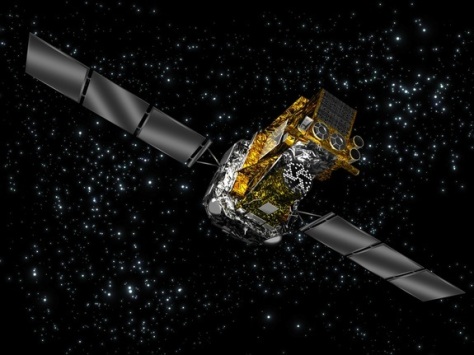Nearly eight months ago, the European Space Agency (esa) successfully launched an unmanned spacecraft under the project name Gaia into orbit approximately 1.5 million kilometers from Earth. As of July 29th, 2014, the Gaia satellite officially began operational status. The purpose of Gaia is to configure the most accurate mapping of the Milky Way Galaxy to-date, over the course of a five year time-span. During that time, the satellite will measure approximately one billion stars contained within the Milky Way Galaxy, measuring each star’s parallax (distance and movement), magnitude, and chemical composition. In effect, the ESA hopes to accomplish the successful configuration of mapping our Milky Way to better understand the actual size and shape of it.

“Gaia Satellite before Launch, under Construction.” Photo. Futura-sciences.com 15 Oct. 2013
Though measurements of the galaxy’s size in diameter are considered fairly accurate as of the present moment (approximately 100,000 light years across), astronomers and physicists have had no real way of observing the definite shape of the Milky Way galaxy until now. This lack of available observation is due to the very simple fact that we cannot see the actual shape of our galaxy if we ourselves are contained inside of it. Therefore, we have relied on the observation of other galaxies in order to make an educated guess as to the size and shape of our own. On top of that, space technology advanced enough to journey beyond the outer-limits of our galaxy have yet to be developed; Voyager 1 for example, launched in 1977, is the furthest traveled unmanned space vessel to-date, having journeyed somewhere in the vicinity of 20 billion kilometers (for up-to-date tracking on Voyager 1 and 2’s status, visit voyager.jpl.nasa.gov). As remarkably vast this distance may seem, is meager in comparison to cosmic terms.
Despite this shortcoming, Gaia is humankind’s most viable effort yet to better understand the physical and chemical composition of our planetary kingdom, the ambition of such comparable to the Hubble Space Telescope. The satellite is equipped with two telescopes containing ten mirrors with the purpose of reflecting as much light as possible into a series of digital detectors that will then be captured and converted into a digital image. Though a relatively simplistic mechanism, Gaia will nevertheless generate a tremendous amount of new and vital information regarding our galaxy.
For more details pertaining to Gaia and ESA, visit www.esa.int/Gaia

“Gaia’s Internal Structure.” Picture. Astro.utu.fi n.d.
Eric DeCamp
decamperic@gmail.com





